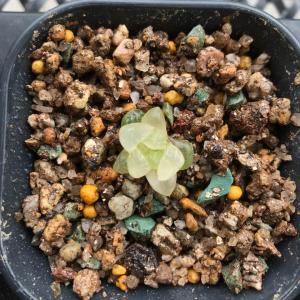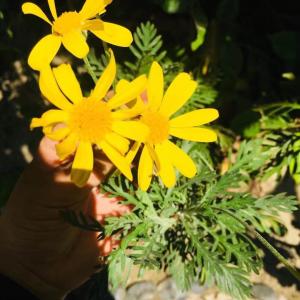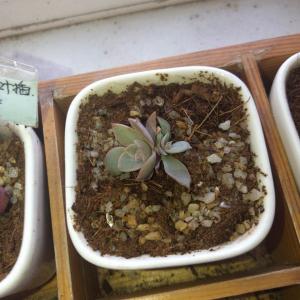文章
Miss Chen
2018年05月07日

Description: This biennial plant is about 1–2½' tall, branching occasionally. The stems have a tendency to zigzag between leaves; they are light green, terete, and both short-pubescent and hairy. The alternate leaves are up to 6" long and 6" across. The lower leaves are pinnately cleft into 5 lobes; they are longer than wide, dentate along their margins, and slightly hairy. The earliest of these lower leaves have patches of greyish white or light green toward the middle of their upper surfaces, providing them with a water-stained appearance. The middle to upper leaves are orbicular and cleft into 5 lobes, resembling maple leaves; they are dentate along their margins and slightly hairy. The petioles of these leaves are rather long and stout; they are both short-pubescent and sparsely hairy.
The upper stems terminate in floppy cymes of flowers. These flowers are about ¾" across when they are fully open, becoming more erect while in bloom. Each flower has a lavender or pale purplish pink corolla that consists of 5 spreading petals. At the base of this corolla, there is a hairy green calyx with 5 narrowly triangular teeth. Between each pair of teeth on the calyx, there is a short appendage that is strongly recurved. Toward the center of the corolla, there are 5 stamens with light to medium brown anthers and a slender white style that is divided toward its apex. The peduncles and pedicels of the cymes are light green, terete, and both short-pubescent and hairy; the peduncles are up to 6" long, while the pedicels are up to 1" long. The blooming period occurs from late spring to early summer, lasting about 3 weeks. Each flower is replaced by a 2-chambered capsule containing several seeds. The root system consists of a taproot. This plant spreads by reseeding itself.

Cultivation: The preference is light dappled shade, moist to mesic conditions, and a rich loamy soil containing abundant organic matter. Sometimes this plant succumbs to fusarium wilt and other wilt-causing fungi. In spite of its biennial habit, it is possible to maintain this plant in a woodland flower garden as it reseeds itself readily.
Range & Habitat: The native Great Waterleaf occurs occasionally in central and northern Illinois; it is less common or absent in the southern and extreme NW areas of the state (see Distribution Map). Habitats include moist to mesic deciduous woodlands, woodland borders, areas adjacent to woodland paths, shaded or partially shaded seeps, and shaded or partially shaded areas along rivers. This woodland wildflower begins to bloom after the leaves of the trees have partially developed.

Faunal Associations: The nectar and pollen of the flowers attract various kinds of bees, including honeybees, bumblebees, mason bees (Hoplitis spp., Osmia spp.), digger bees (Synhalonia spp.), Andrenid bees (Andrena spp.), and Halictid bees (Lasioglossum spp., etc.). An Andrenid bee, Andrena geranii, is a specialist pollinator (oligolege) of Hydrophyllum spp. Other insects that visit the flowers include Syrphid flies, dance flies (Empis spp.), butterflies, and skippers. Except for these flower visitors, surprisingly little appears to be known about floral-fauna relationships for this species. White-Tailed Deer probably browse on the foliage.
Photographic Location: A woodland flower garden on the campus of the University of Illinois in Urbana, Illinois, and a deciduous woodland at Pine Hills State Nature Preserve in west-central Indiana.

Comments: Great Waterleaf (Hydrophyllum appendiculatum) is one of the more common Hydrophyllum spp. within the state and its flowers are the most attractive. This species has hairy stems and calyxes, and some of its leaves resemble maple leaves. A distinctive characteristic consists of the small recurved appendages between the teeth of its calyx, hence the "appendiculatum" in the scientific name. Other Hydrophyllum spp. lack these strongly recurved appendages and they have less showy flowers. Virginia Waterleaf (Hydrophyllum virginiana) and Canada Waterleaf (Hydrophyllum canadense) have less hairy stems, while Large-Leaved Waterleaf (Hydrophyllum macrophyllum) lacks cleft orbicular leaves that resemble maple leaves. The leaves of this latter species are always longer than broad, and they are pinnately divided to an even greater extent than the lower leaves of Great Waterleaf.
The upper stems terminate in floppy cymes of flowers. These flowers are about ¾" across when they are fully open, becoming more erect while in bloom. Each flower has a lavender or pale purplish pink corolla that consists of 5 spreading petals. At the base of this corolla, there is a hairy green calyx with 5 narrowly triangular teeth. Between each pair of teeth on the calyx, there is a short appendage that is strongly recurved. Toward the center of the corolla, there are 5 stamens with light to medium brown anthers and a slender white style that is divided toward its apex. The peduncles and pedicels of the cymes are light green, terete, and both short-pubescent and hairy; the peduncles are up to 6" long, while the pedicels are up to 1" long. The blooming period occurs from late spring to early summer, lasting about 3 weeks. Each flower is replaced by a 2-chambered capsule containing several seeds. The root system consists of a taproot. This plant spreads by reseeding itself.

Cultivation: The preference is light dappled shade, moist to mesic conditions, and a rich loamy soil containing abundant organic matter. Sometimes this plant succumbs to fusarium wilt and other wilt-causing fungi. In spite of its biennial habit, it is possible to maintain this plant in a woodland flower garden as it reseeds itself readily.
Range & Habitat: The native Great Waterleaf occurs occasionally in central and northern Illinois; it is less common or absent in the southern and extreme NW areas of the state (see Distribution Map). Habitats include moist to mesic deciduous woodlands, woodland borders, areas adjacent to woodland paths, shaded or partially shaded seeps, and shaded or partially shaded areas along rivers. This woodland wildflower begins to bloom after the leaves of the trees have partially developed.

Faunal Associations: The nectar and pollen of the flowers attract various kinds of bees, including honeybees, bumblebees, mason bees (Hoplitis spp., Osmia spp.), digger bees (Synhalonia spp.), Andrenid bees (Andrena spp.), and Halictid bees (Lasioglossum spp., etc.). An Andrenid bee, Andrena geranii, is a specialist pollinator (oligolege) of Hydrophyllum spp. Other insects that visit the flowers include Syrphid flies, dance flies (Empis spp.), butterflies, and skippers. Except for these flower visitors, surprisingly little appears to be known about floral-fauna relationships for this species. White-Tailed Deer probably browse on the foliage.
Photographic Location: A woodland flower garden on the campus of the University of Illinois in Urbana, Illinois, and a deciduous woodland at Pine Hills State Nature Preserve in west-central Indiana.

Comments: Great Waterleaf (Hydrophyllum appendiculatum) is one of the more common Hydrophyllum spp. within the state and its flowers are the most attractive. This species has hairy stems and calyxes, and some of its leaves resemble maple leaves. A distinctive characteristic consists of the small recurved appendages between the teeth of its calyx, hence the "appendiculatum" in the scientific name. Other Hydrophyllum spp. lack these strongly recurved appendages and they have less showy flowers. Virginia Waterleaf (Hydrophyllum virginiana) and Canada Waterleaf (Hydrophyllum canadense) have less hairy stems, while Large-Leaved Waterleaf (Hydrophyllum macrophyllum) lacks cleft orbicular leaves that resemble maple leaves. The leaves of this latter species are always longer than broad, and they are pinnately divided to an even greater extent than the lower leaves of Great Waterleaf.
0
0
文章
Miss Chen
2018年05月07日

Description: This herbaceous perennial plant consists of a large tuft of basal leaves up to ½' tall, from which one or more flowering stalks develop that are 2–3½' tall. The blades of the basal leaves are 2½–4" across. They are more or less orbicular in overall shape, but with 5-9 lobes along their margins; these lobes are shallow and rounded. The blades are indented at the junction of the petioles, while their margins are coarsely crenate-dentate. The upper surfaces of the leaf blades are medium green and sometimes variegated; they have scattered short hairs and a rough texture. The slender petioles are light green and hairy; they are as long or longer than their blades. The tall flowering stalks are light green, terete, hairy, and without leaves. At the apex of each stalk, there is a narrow panicle of flowers about 3-8" long. The spreading branches of the panicle are light green and hairy, while the flowers are drooping. Each fully developed flower is 4.0–4.5 mm. long, consisting of a light green or reddish green calyx with 5 narrow lobes, 5 light green petals, 5 strongly exerted stamens with orange-red anthers, and 2 styles. The petals are smaller than the calyx and insignificant. The calyx is conspicuously swollen toward its base. The blooming period occurs from late spring to early summer and lasts about 3 weeks. There is no noticeable floral scent. Each flower is replaced by a small seed capsule that has 2 prominent beaks. There are numerous tiny seeds inside each capsule, which are small enough to be blown about by the wind. The root system consists of a crown with fibrous roots. The preceding description applies only to var. hirsuticaulis.
Cultivation: The preference is dappled sunlight during the spring, followed by light shade during the summer. The soil should be well-drained, mesic to dry, and loamy or rocky. This is primarily a foliage plant that can function as a ground cover if it is densely planted.
Range & Habitat: The native Woodland Alumroot is occasional in the southern half of Illinois, while in the northern half of the state it is rare or absent (see Distribution Map). Habitats include upland rocky woodlands, thinly wooded bluffs, and wooded slopes. This species is found in high quality habitats where oak trees are often present. The most commonly encountered variety of Woodland Alumroot within the state is var. hirsuticaulis.
Faunal Associations: The nectar and pollen of the flowers attract small bees, including Halictid bees (Halictus spp., Lasioglossum spp., & Augochlorella spp.) and the oligolectic Plasterer bee Colletes aestivalis. This latter bee is a specialist pollinator of Heuchera spp. Insects that prefer to feed on the foliage or juices of Heuchera spp. include the flea beetle Altica heucherae and the aphid Nasonovia heucherae. The bitter-tasting basal leaves are usually ignored by mammalian herbivores.

Photographic Location: An upland rocky woodland at the Portland Arch in west-central Indiana.
Comments: Woodland Alumroot and other native Heuchera spp. are related to the commonly cultivated 'Coral Bells' of horticulture. However, the flowers of the native species are usually green and less showy. Across its range, different varieties of Woodland Alumroot have been identified. Compared to the typical variety, the variety that has been described here (var. hirsuticaulis) has flowering stalks and petioles that are more hairy. Otherwise, they are very similar. Another variety that has been recognized in Illinois, var. interior, has smaller flowers (3.0–3.5 mm. long) than var. hirsuticaulis. Another species in this genus that is sometimes encountered within the state is Heuchera richardsonii (Prairie Alumroot). It differs from the preceding varieties of Woodland Alumroot by its longer asymmetrical flowers (5.0–9.0 mm.). The flowers of Woodland Alumroot are more symmetrical (one side of the flower is about as long as another side).
Cultivation: The preference is dappled sunlight during the spring, followed by light shade during the summer. The soil should be well-drained, mesic to dry, and loamy or rocky. This is primarily a foliage plant that can function as a ground cover if it is densely planted.
Range & Habitat: The native Woodland Alumroot is occasional in the southern half of Illinois, while in the northern half of the state it is rare or absent (see Distribution Map). Habitats include upland rocky woodlands, thinly wooded bluffs, and wooded slopes. This species is found in high quality habitats where oak trees are often present. The most commonly encountered variety of Woodland Alumroot within the state is var. hirsuticaulis.
Faunal Associations: The nectar and pollen of the flowers attract small bees, including Halictid bees (Halictus spp., Lasioglossum spp., & Augochlorella spp.) and the oligolectic Plasterer bee Colletes aestivalis. This latter bee is a specialist pollinator of Heuchera spp. Insects that prefer to feed on the foliage or juices of Heuchera spp. include the flea beetle Altica heucherae and the aphid Nasonovia heucherae. The bitter-tasting basal leaves are usually ignored by mammalian herbivores.

Photographic Location: An upland rocky woodland at the Portland Arch in west-central Indiana.
Comments: Woodland Alumroot and other native Heuchera spp. are related to the commonly cultivated 'Coral Bells' of horticulture. However, the flowers of the native species are usually green and less showy. Across its range, different varieties of Woodland Alumroot have been identified. Compared to the typical variety, the variety that has been described here (var. hirsuticaulis) has flowering stalks and petioles that are more hairy. Otherwise, they are very similar. Another variety that has been recognized in Illinois, var. interior, has smaller flowers (3.0–3.5 mm. long) than var. hirsuticaulis. Another species in this genus that is sometimes encountered within the state is Heuchera richardsonii (Prairie Alumroot). It differs from the preceding varieties of Woodland Alumroot by its longer asymmetrical flowers (5.0–9.0 mm.). The flowers of Woodland Alumroot are more symmetrical (one side of the flower is about as long as another side).
0
0
文章
权问薇
2018年05月07日

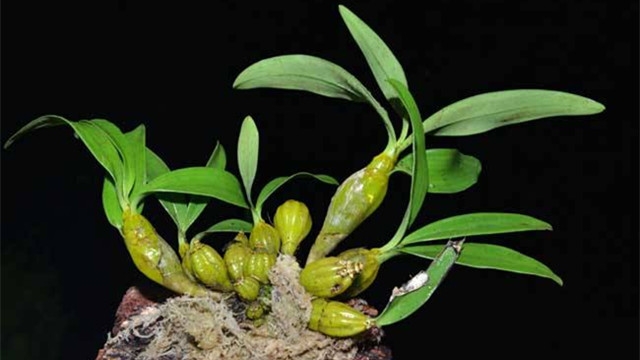
一、水培方法
1、选择水培铁皮石斛
水培之前,首先要选择适合水培的植株,以生长2年以上并且已经驯化的铁皮石斛幼苗最佳,或剪掉老植株上的部分枝条和花苞也可以。
2、处理水培植株
将选择好的植株仔细清洗一下,将其上面的泥土洗掉,并剪去上面的烂根、老根或病根,之后就可将它泡在放有多菌灵的溶液中,以防根部伤口受到病菌感染,消毒好之后,就可将它放在阴凉地方晾干,就可进行水培了。
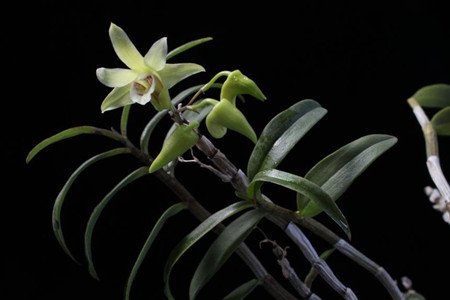
3、准备水培容器
选择水培容器时,最好用透明度较好的瓶子,并且瓶子上面还带颈,因为这样就可以让铁皮石斛完全融入到水中,如果找不到这种瓶子的话,可以用胶带将其固定住。
4、进行水培
将准备好的水培植株放在瓶子里面,然后就可以向里面开始添加水分,水里可适当添加一些植物营养液,通常用氨基酸或者酵素,苹果醋也可以,但不管是哪一种,都不可放太多,只需一小瓶盖即可。如果你不想用这些,也可以直接买营养液。
5、及时换水和营养液
水培时,要注意定时给它换水和营养液,如果是春天,时间以7到10天最好,如果是冬天就可相隔时间长一些,因为此时温度低,植物消耗的营养少,以15天左右换一次最佳。到了夏天时,它的呼吸量大,营养消耗也快,所以相隔4到5天就需换一次营养液和水,这样才能将其水培好。
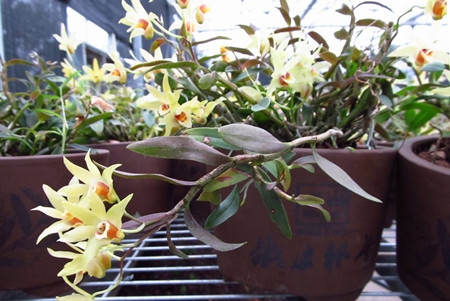
二、注意事项
水培它时,要注意根不能完全留在水里,要留出三分之二在外面。另外还要保证好的通风条件。
1
0
文章
Miss Chen
2018年05月06日

Description: This perennial herbaceous plant is 2–4' tall. The central stem is light green, bluntly 4-angled with shallow channels along its sides, and usually unbranched. This stem is hairless to moderately short-pubescent. Pairs of opposite leaves occur along the entire length of the stem. These leaves are 2–6" long, 1½–4" across, usually ovate in shape, and coarsely serrate-crenate along their margins. The leaf tips are usually acute, while the leaf bases are wedge-shaped (cuneate) to rounded. The upper leaf surface is medium to dark green and hairless to sparsely short-pubescent, while the lower leaf surface is light grayish green, hairless to sparsely pubescent, and glandular-punctate (appearing like glistening dots in bright light). The narrow petioles are ½–2" long, light green, and hairless to moderately short-pubescent; sometimes the uppermost leaves are sessile or nearly so. The central stem terminates in either a spike-like raceme or pyramidal panicle of flowers (depending on the robustness of individual plants). Individual panicles are up to 8" long and 6" across, consisting of a central stalk and several lateral branches that become progressively shorter upward. These lateral branches are spreading to ascending. Both the central stalk and lateral branches of the inflorescence are light green and bluntly 4-angled with shallow channels along their sides; they are hairless to moderately short-pubescent. The inflorescence also has small green bracts that are less than 1/8" (3 mm.) long; they are narrow in shape and early-deciduous.
Individual flowers are about 1/3–1/2" (8–13 mm.) long, consisting of a short-tubular to bell-shaped green calyx with 5 teeth, a two-lipped tubular corolla that is predominately cream-colored or yellow, 2 long-exserted fertile stamens, and an ovary with a slender style that is also long-exserted. The calyx is minutely pubescent and glandular-punctate; it has 2 linear-lanceolate lower teeth and 3 linear-deltate upper teeth; the lower teeth are longer than the upper teeth. The calyx also has 10 narrow longitudinal ridges that are dark green. The corolla has a narrow tubular base, but it becomes wider and more trumpet-shaped towards its mouth with 5 spreading lobes (2 upper lobes, 2 lateral lobes, and 1 lower lobe that is larger in size). The upper and lateral lobes are either oval or oval-deltate in shape, while the lower lobe is violin-shaped, mostly white, and heavily fringed along its outer lip. Sometimes there are reddish stripes or bars along the upper and middle lobes of the corolla, while either patches or stripes of faded red may occur toward the base of the lower lobe. The throat of the corolla is a little wider than tall, where there is a patch of fine white hairs. The filaments of the stamens are white, light yellow, or light greenish yellow, while the fertile anthers are either white or light yellow. The slender style is dark red and usually bent toward one of the stamens. The pedicels of the flowers are about 1/8" (3 mm.) in length or slightly longer; they are light green and short-pubescent.

The blooming period occurs from mid-summer to early autumn, lasting about 3-4 weeks. Both the flowers and foliage have a lemon or citronella scent. Afterwards, the flowers are replaced by small nutlets (0-2 nutlets per flower); they develop within enlarged calyces. Individual nutlets are about 1.5 mm. across, globoid but somewhat flattened in shape, and dark brown. The root system consists of hard woody rhizomes with coarse fibrous roots. This plant often forms clonal colonies from its rhizomes.
Cultivation: The preference is medium to light shade, mesic conditions, and mildly acidic soil containing humus and loam. This plant is an excellent choice for a shade garden under deciduous trees.
Range & Habitat: Richweed (Collinsonia canadensis) is uncommon in east-central Illinois and southern Illinois, where this plant is native, while in the rest of the state it is absent (see Distribution Map). Illinois lies along its western-range limit; Richweed is more common further to the east. Habitats include rich woodlands, rocky upland woodlands, wooded areas in rocky river valleys, and less often elevated areas in swamps. This plant tends to occur in oak-hickory woodlands and beech-maple woodlands, especially in areas where sandstone bedrock is not far from the ground surface.

Faunal Associations: Bumblebees are the primary pollinators of the flowers, where both nectar and pollen are available as floral rewards (Skinner, 1976). Several species of insects are known to feed on Richweed (Collinsonia canadensis); many of these species are monophagous or oligophagous. These insect feeders include larvae of the gall flies, Dasineura collinsoniae and Lasioptera collinsonifolia, such aphids as Hyalomyzus collinsoniae and Hyalomyzus eriobotryae, Amblycorypha rotundifolia (Round-winged Katydid), and the larvae of such Noctuid moths as Psectrotarsia herbardi (Horse-balm Sun Moth), Papaipema astuta (Yellow Stoneroot Borer Moth), Papaipema duplicatus (Dark Stoneroot Borer Moth), and Papaipema nebris (Stalk Borer Moth); see Felt (1917), Blackman & Eastop (2013), Gangwere (1961), and Natural History Museum (2010). Slugs also feed on the flowers of Richweed (personal observation, 2017). Among vertebrate animals, the seeds of this plant are eaten by the Bobwhite Quail and possibly other birds (Miller & Miller, 1999). White-tailed Deer and other mammalian herbivores usually avoid this plant as a food source.
Photographic Location: A rocky woodland at the Pine Hills State Nature Preserve in west-central Indiana.

Comments: This wildflower produces flowers in late summer when there is little else in bloom in shady woodlands. While bumblebees have been reported to be the primary pollinators of the flowers (Skinner, 1976), the long-exserted stamens and styles of the flowers, the white fringe of the lower lip of the corolla, and the fragrance of the flowers suggest that moths also visit the flowers for nectar. When the flowers of Richweed (Collinsonia canadensis) are in bloom, this plant is fairly easy to identify because of their distinctive appearance. Otherwise, it may be difficult to distinguish this species from other plant species that grow in woodlands, such as Scrophularia (Figwort) and Agastache (Giant Hyssop). A non-native species that is becoming invasive in wooded areas, the green-leaved form of Perilla frutescens (Beefsteak Plant), could also be confused with Richweed on the basis of its foliage. However, the flowers of the Beefsteak Plant do not have a deeply fringed lower lip nor do they have strongly exserted stamens and styles. The lemon-citronella fragrance of the foliage of Richweed, however, can be used to distinguish it from these other plants. While there are several similar-appearing Collinsonia spp. in southeastern USA, none of them occur in Illinois. Other common names of Collinsonia canadensis include Stone Root and Northern Horse Balm.
Individual flowers are about 1/3–1/2" (8–13 mm.) long, consisting of a short-tubular to bell-shaped green calyx with 5 teeth, a two-lipped tubular corolla that is predominately cream-colored or yellow, 2 long-exserted fertile stamens, and an ovary with a slender style that is also long-exserted. The calyx is minutely pubescent and glandular-punctate; it has 2 linear-lanceolate lower teeth and 3 linear-deltate upper teeth; the lower teeth are longer than the upper teeth. The calyx also has 10 narrow longitudinal ridges that are dark green. The corolla has a narrow tubular base, but it becomes wider and more trumpet-shaped towards its mouth with 5 spreading lobes (2 upper lobes, 2 lateral lobes, and 1 lower lobe that is larger in size). The upper and lateral lobes are either oval or oval-deltate in shape, while the lower lobe is violin-shaped, mostly white, and heavily fringed along its outer lip. Sometimes there are reddish stripes or bars along the upper and middle lobes of the corolla, while either patches or stripes of faded red may occur toward the base of the lower lobe. The throat of the corolla is a little wider than tall, where there is a patch of fine white hairs. The filaments of the stamens are white, light yellow, or light greenish yellow, while the fertile anthers are either white or light yellow. The slender style is dark red and usually bent toward one of the stamens. The pedicels of the flowers are about 1/8" (3 mm.) in length or slightly longer; they are light green and short-pubescent.

The blooming period occurs from mid-summer to early autumn, lasting about 3-4 weeks. Both the flowers and foliage have a lemon or citronella scent. Afterwards, the flowers are replaced by small nutlets (0-2 nutlets per flower); they develop within enlarged calyces. Individual nutlets are about 1.5 mm. across, globoid but somewhat flattened in shape, and dark brown. The root system consists of hard woody rhizomes with coarse fibrous roots. This plant often forms clonal colonies from its rhizomes.
Cultivation: The preference is medium to light shade, mesic conditions, and mildly acidic soil containing humus and loam. This plant is an excellent choice for a shade garden under deciduous trees.
Range & Habitat: Richweed (Collinsonia canadensis) is uncommon in east-central Illinois and southern Illinois, where this plant is native, while in the rest of the state it is absent (see Distribution Map). Illinois lies along its western-range limit; Richweed is more common further to the east. Habitats include rich woodlands, rocky upland woodlands, wooded areas in rocky river valleys, and less often elevated areas in swamps. This plant tends to occur in oak-hickory woodlands and beech-maple woodlands, especially in areas where sandstone bedrock is not far from the ground surface.

Faunal Associations: Bumblebees are the primary pollinators of the flowers, where both nectar and pollen are available as floral rewards (Skinner, 1976). Several species of insects are known to feed on Richweed (Collinsonia canadensis); many of these species are monophagous or oligophagous. These insect feeders include larvae of the gall flies, Dasineura collinsoniae and Lasioptera collinsonifolia, such aphids as Hyalomyzus collinsoniae and Hyalomyzus eriobotryae, Amblycorypha rotundifolia (Round-winged Katydid), and the larvae of such Noctuid moths as Psectrotarsia herbardi (Horse-balm Sun Moth), Papaipema astuta (Yellow Stoneroot Borer Moth), Papaipema duplicatus (Dark Stoneroot Borer Moth), and Papaipema nebris (Stalk Borer Moth); see Felt (1917), Blackman & Eastop (2013), Gangwere (1961), and Natural History Museum (2010). Slugs also feed on the flowers of Richweed (personal observation, 2017). Among vertebrate animals, the seeds of this plant are eaten by the Bobwhite Quail and possibly other birds (Miller & Miller, 1999). White-tailed Deer and other mammalian herbivores usually avoid this plant as a food source.
Photographic Location: A rocky woodland at the Pine Hills State Nature Preserve in west-central Indiana.

Comments: This wildflower produces flowers in late summer when there is little else in bloom in shady woodlands. While bumblebees have been reported to be the primary pollinators of the flowers (Skinner, 1976), the long-exserted stamens and styles of the flowers, the white fringe of the lower lip of the corolla, and the fragrance of the flowers suggest that moths also visit the flowers for nectar. When the flowers of Richweed (Collinsonia canadensis) are in bloom, this plant is fairly easy to identify because of their distinctive appearance. Otherwise, it may be difficult to distinguish this species from other plant species that grow in woodlands, such as Scrophularia (Figwort) and Agastache (Giant Hyssop). A non-native species that is becoming invasive in wooded areas, the green-leaved form of Perilla frutescens (Beefsteak Plant), could also be confused with Richweed on the basis of its foliage. However, the flowers of the Beefsteak Plant do not have a deeply fringed lower lip nor do they have strongly exserted stamens and styles. The lemon-citronella fragrance of the foliage of Richweed, however, can be used to distinguish it from these other plants. While there are several similar-appearing Collinsonia spp. in southeastern USA, none of them occur in Illinois. Other common names of Collinsonia canadensis include Stone Root and Northern Horse Balm.
0
0
文章
Miss Chen
2018年05月06日

Description: This wildflower is a winter annual about 4-12" tall that is unbranched. The central stem is light green, terete, and pubescent. The opposite leaves are up to 2" long and ¾" across; they are either medium green or yellowish green and either glabrous or pubescent (usually the latter). The lowest leaves are oval to orbicular with a few blunt teeth along their margins; they are smaller than the other leaves and there are petioles at their bases. The middle leaves are the largest and most conspicuous; they are oval to broadly lanceolate, often with a few blunt teeth along their margins, and their bases are either sessile or they clasp the stem. The uppermost leaves are usually lanceolate and smooth along their margins; their bases are either sessile or they clasp the stem.
The central stem terminates in a whorl of 2-6 flowers on slender pedicels up to 1" long. Sometimes individual flowers develop from the axils of the upper leaves as well; these axillary flowers have slender pedicels up to 1½" long. The pedicels are light green, terete, and pubescent. Each flower is ½-¾" across, consisting of a green calyx with 5 teeth and a blue/white corolla. The calyx is light green to purplish green; it is often pubescent and its teeth are narrowly triangular in shape. The corolla is short-tubular and it is divided into upper and lower lips. The upper lip is cleft into 2 large rounded lobes that are white, while the lower lip is cleft into 3 lobes. The 2 large outer lobes of the lower lip are light blue to blue-violet and rounded, while the tiny middle lobe of the lower lip is folded into a keel and hidden from view. This middle lobe contains the stamens and style of the flower.
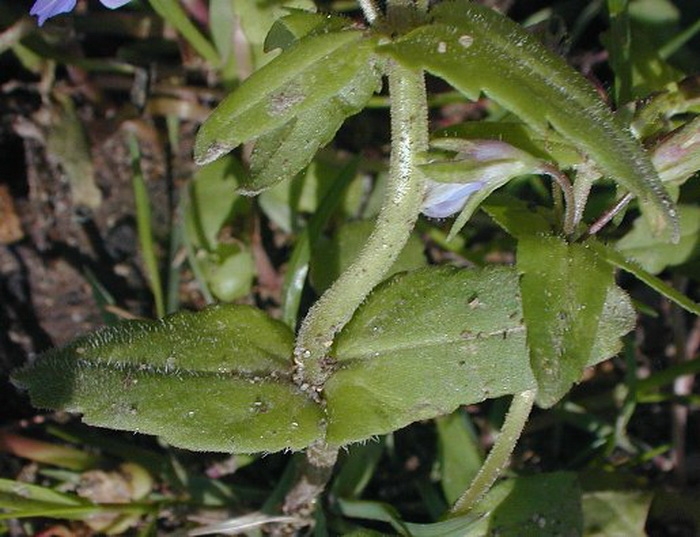
The blooming period occurs from mid- to late spring, lasting about 3 weeks. Afterwards, each flower is replaced by an globoid-ovoid capsule that contains a few large seeds. The root system consists of a slender taproot. This plant spreads by reseeding itself; it often forms colonies of variable size.
Cultivation: The preference is dappled sunlight to light shade, moist to mesic conditions, and a rich loamy soil. The size of individual plants is strongly influenced by moisture conditions and the fertility of the soil. The seeds should be planted during the summer so that they will germinate during the fall.
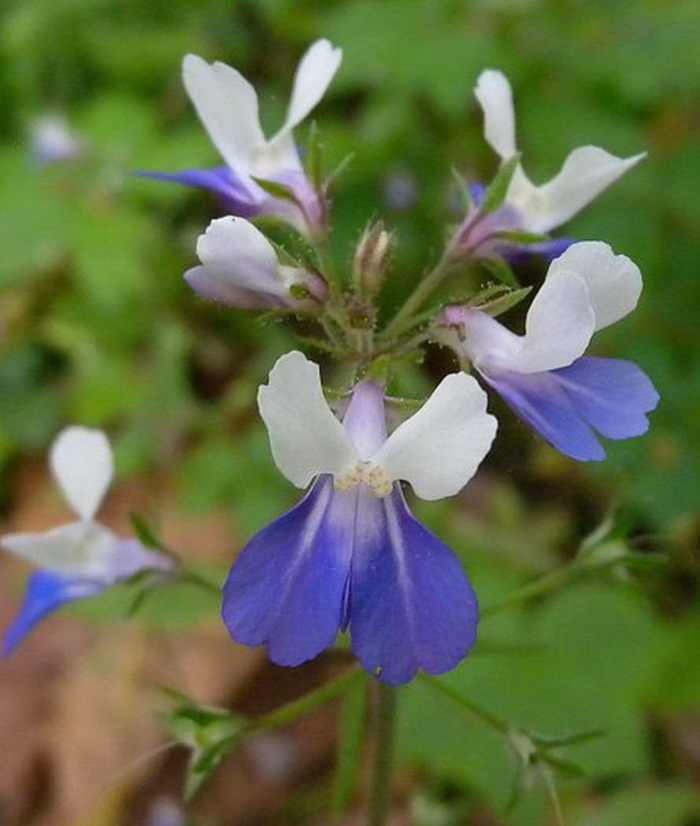
Range & Habitat: Blue-Eyed Mary occurs occasionally in NE and east central Illinois, but it tends to be less common elsewhere (see Distribution Map). At some high quality sites around the state, it is locally abundant. Habitats include moist to mesic deciduous woodlands, wooded lower slopes of river valleys, and areas along woodland paths. Sometimes Blue-Eyed Mary occurs in drier deciduous woodlands, in which case the individual plants will be smaller in size. Even though it tolerates minor levels of disturbance, this wildflower is an indicator species of high quality woodlands.
Faunal Associations: The nectar and pollen of the flowers attract honeybees, bumblebees, little carpenter bees (Ceratina spp.), long-horned bees (Synhalonia spp.), and mason bees (Osmia spp.). Less common flower visitors include dance flies (Empis spp.), the Giant Bee Fly (Bombylius major), butterflies, and skippers. Little else appears to be known about floral-faunal relationships for this species.

Photographic Location: Along a path in a deciduous woodlands at Allerton Park in Piatt County, Illinois, and the wooded lower slope of a river valley at Lodge Park in the same county.
Comments: The distinctive bicolored flowers are very beautiful, making Blue-Eyed Mary easy to identify. This woodland wildflower is unusual in having flowers that are close to a true blue color. The only other species in the genus that has been observed in Illinois is Collinsia violacea (Violet Collinsia). This latter wildflower is also a winter annual that has corollas with a deeper shade of purplish violet and more narrow lanceolate leaves. Violet Collinsia prefers sunnier habitats than Blue-Eyed Mary, and it is quite rare within the state, although more common in the Southern Plains region of the United States.
The central stem terminates in a whorl of 2-6 flowers on slender pedicels up to 1" long. Sometimes individual flowers develop from the axils of the upper leaves as well; these axillary flowers have slender pedicels up to 1½" long. The pedicels are light green, terete, and pubescent. Each flower is ½-¾" across, consisting of a green calyx with 5 teeth and a blue/white corolla. The calyx is light green to purplish green; it is often pubescent and its teeth are narrowly triangular in shape. The corolla is short-tubular and it is divided into upper and lower lips. The upper lip is cleft into 2 large rounded lobes that are white, while the lower lip is cleft into 3 lobes. The 2 large outer lobes of the lower lip are light blue to blue-violet and rounded, while the tiny middle lobe of the lower lip is folded into a keel and hidden from view. This middle lobe contains the stamens and style of the flower.

The blooming period occurs from mid- to late spring, lasting about 3 weeks. Afterwards, each flower is replaced by an globoid-ovoid capsule that contains a few large seeds. The root system consists of a slender taproot. This plant spreads by reseeding itself; it often forms colonies of variable size.
Cultivation: The preference is dappled sunlight to light shade, moist to mesic conditions, and a rich loamy soil. The size of individual plants is strongly influenced by moisture conditions and the fertility of the soil. The seeds should be planted during the summer so that they will germinate during the fall.

Range & Habitat: Blue-Eyed Mary occurs occasionally in NE and east central Illinois, but it tends to be less common elsewhere (see Distribution Map). At some high quality sites around the state, it is locally abundant. Habitats include moist to mesic deciduous woodlands, wooded lower slopes of river valleys, and areas along woodland paths. Sometimes Blue-Eyed Mary occurs in drier deciduous woodlands, in which case the individual plants will be smaller in size. Even though it tolerates minor levels of disturbance, this wildflower is an indicator species of high quality woodlands.
Faunal Associations: The nectar and pollen of the flowers attract honeybees, bumblebees, little carpenter bees (Ceratina spp.), long-horned bees (Synhalonia spp.), and mason bees (Osmia spp.). Less common flower visitors include dance flies (Empis spp.), the Giant Bee Fly (Bombylius major), butterflies, and skippers. Little else appears to be known about floral-faunal relationships for this species.

Photographic Location: Along a path in a deciduous woodlands at Allerton Park in Piatt County, Illinois, and the wooded lower slope of a river valley at Lodge Park in the same county.
Comments: The distinctive bicolored flowers are very beautiful, making Blue-Eyed Mary easy to identify. This woodland wildflower is unusual in having flowers that are close to a true blue color. The only other species in the genus that has been observed in Illinois is Collinsia violacea (Violet Collinsia). This latter wildflower is also a winter annual that has corollas with a deeper shade of purplish violet and more narrow lanceolate leaves. Violet Collinsia prefers sunnier habitats than Blue-Eyed Mary, and it is quite rare within the state, although more common in the Southern Plains region of the United States.
1
0







